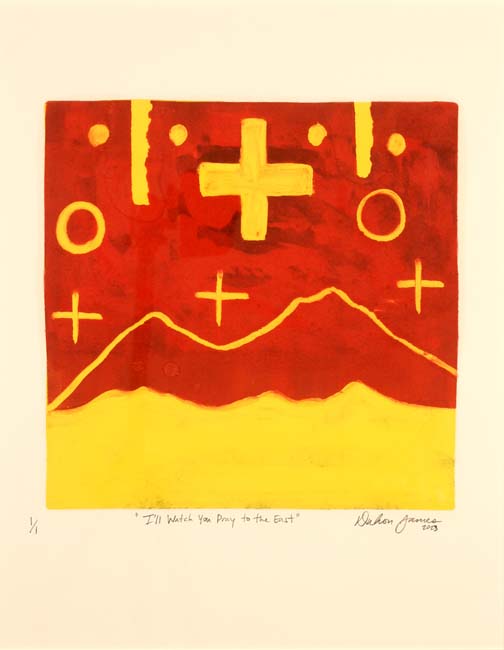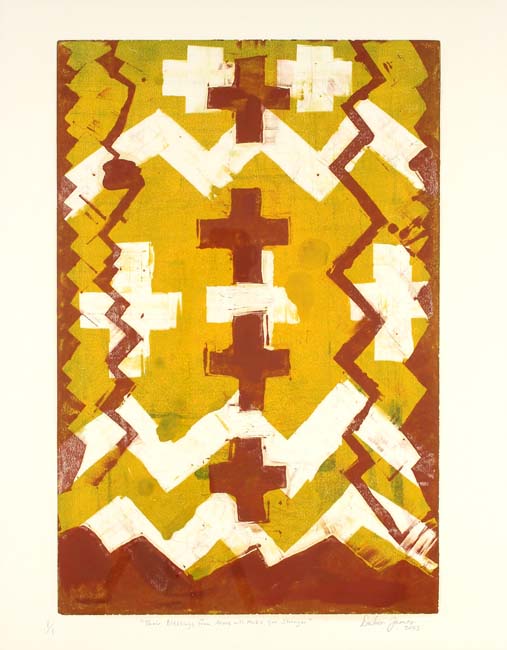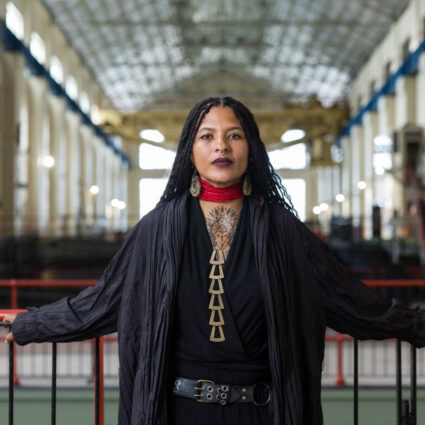Capturing glimpses of ancestors and extraterrestrials, Duhon James’s (Diné) work illustrates a moment in time with something both there and not there at once.
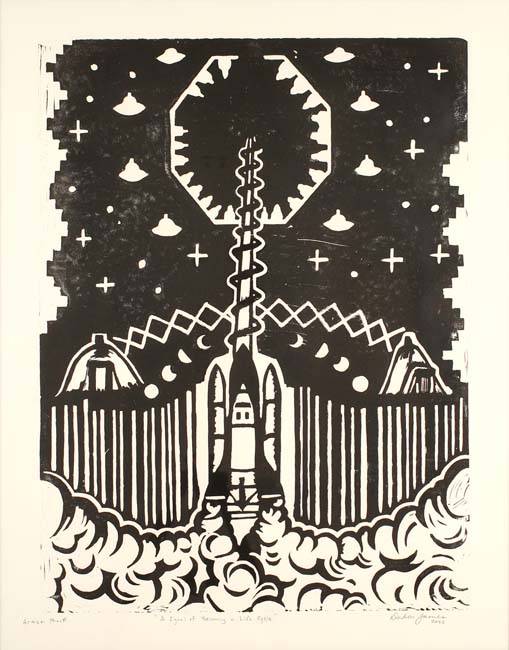
SANTA FE—Born in Tuba City, Arizona, of Water’s Edge clan, and born for Bitter Water clan, Duhon James brings together Diné cosmology, sense of place, and lived experience with extraterrestrial imagery, creating poignant work that prompts curiosity, conversation, and reflection.
James’s work in the exhibition focuses on relationships, moving between lighthearted interactions between aliens and Diné communities to intimate conversations between the artist and those no longer with us. In describing the body of work in the exhibition text, James says, “It’s like something or someone is tapping on your shoulders, to get that feeling that they’re still there with you in a spiritual way.” Capturing glimpses of ancestors and extraterrestrials, James’s work illustrates a moment in time—either real or imagined—with something both there and not there at the same time.
James recounts an encounter in 2009, at home in Ganado, Arizona. He “remembers sitting on his sister’s porch when a sudden stillness settled around him, and he looked up to see a blue and white orb rotating about ten feet above him. It remained for a few seconds before flying back into the sky.” James understood this event to be a visit from a loved one. “I feel like there’s a relationship. Sometimes I wonder who we sing to and pray to. I see it’s to the Holy People, but what if there’s more to who answers what we say?”
In the gallery, A Signal of Becoming a Life Cycle (2023) captures the story of extraterrestrials circling the sky trying to find new places to live and eventually encountering a Diné community. Trying to get in touch with them, the Diné gather to make the signal stronger so these new people can come into their world. Similarly, in Second Night Chants Are Stronger (2023), James explains to me that “aliens were passing through Earth, picked up a signal of people singing in an unfamiliar language, and landed directly into a Diné ceremony. They were welcomed to eat, gathered around the fire to help the Diné sing, and their presence helped the ceremony come to fruition.”
Moving between drawing, painting, relief printing, and wood and linoleum block printing, James’s work is rooted in place—in Diné Bikéyah, the Navajo homeland. In addition to and outside of UFO imagery, his work speaks to his experiences of home, family, and community. I’ll Watch You Pray to the East (2023), plays with the reds associated with the Ganado region—both the reds of the bluffs and Ganado’s regional weaving styles—while also evoking the emotions associated with the color. The work addresses someone who is no longer here: “You get up in the morning, look to the east, and you have a sense that someone is there watching you, greeting you, letting you know that they’re still here,” James expresses to me.
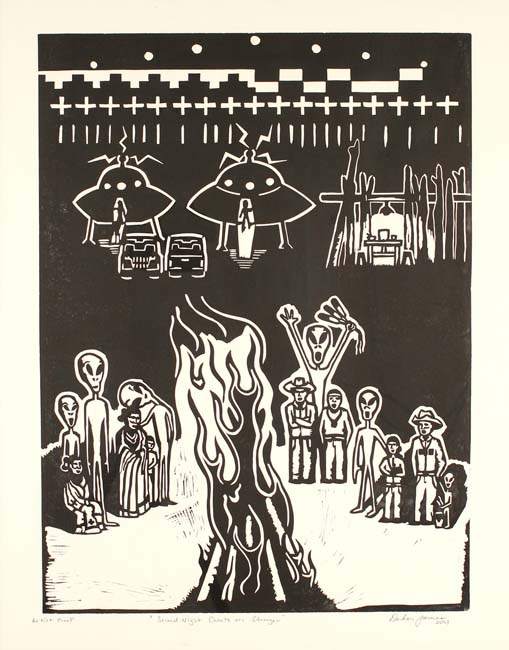
In addition to color, geometry also plays a large role in James’s work. In Their Blessings from Above Will Make You Stronger (2023), the artist uses geometric forms to depict scenes of Dinétah—the mountains and stars that envelop his home of Ganado. For James, this piece speaks to intergenerational knowledge sharing. He explains, “As I rotate throughout the stars, I will continue to connect with you and think about what I passed down to you.”
When James was in elementary school on the Navajo Nation, an artist visited his class. The artist selected James to draw an upside-down A on a piece of paper, from which he created a landscape painting that he later gifted to James. This encounter encouraged James to continue being an artist, “to keep going as far as I could with it.” James tells me, “It has been a tough few years for my family. We’ve dealt with a lot of loss, but I’m able to express my emotions through my artwork. It allows me to appreciate the good things we have in our lives while also dealing with that darkness.”
Frank Rose, director of Hecho a Mano, reflects on James’s work via email: “Duhon’s vision provides a unique perspective as a Diné artist working with printmaking. It’s both funny and touching to me; a kind of bittersweet feeling of difficulty and the desire to escape, sweetened with a bit of humor. When I first saw his work, I immediately knew I wanted to share it with others.”
The opening of Above, I’ll Watch You From Here coincided with Congress’ so-called “UFO hearing,” in which intelligence officials testified that more is known about extraterrestrial life than the public is aware of. In this, James is pointing us in the right direction—towards a place where the knowledge of our ancestors can come together with the teachings of the future.
